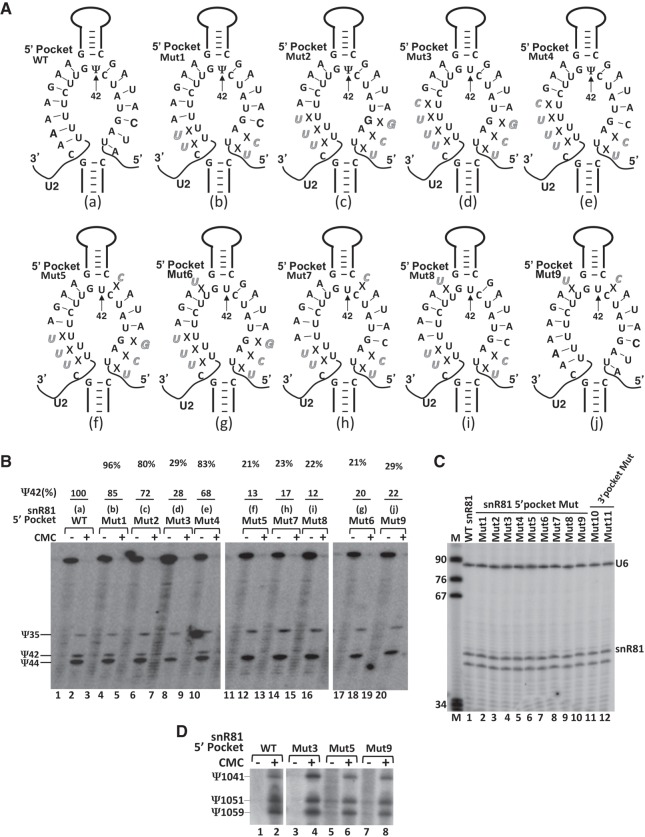FIGURE 3.
Effects of mutations of snR81 (within the 5′ pocket) on Ψ42 formation within U2 snRNA. (A) Schematic representation of base-pairing interactions between the 5′ pocket of snR81 and U2. Depicted are base-pairing interactions between the wild-type (a) or various mutant (b–j) 5′ pockets of snR81 and the wild-type U2 substrate sequence. Italicized letters represent mutated nucleotides. Crosses (Xs) indicate disrupted base-pairing interactions. (B) Detection of Ψs in yeast U2 using CMC-modification followed by primer-extension. U2 pseudouridylation was assayed in the context of wild-type (lanes 1 and 2) and various mutant (lanes 3–20) snR81 (illustrated in A, a–j). Signals corresponding to Ψ35, Ψ42, and Ψ44 are indicated. The formation of Ψ42 was quantified using the formula Ψ42/(Ψ35 + Ψ42 + Ψ44). The mutants (mutant lanes) were then normalized to the wild-type control. The final pseudouridylation efficiency numbers (Ψ42%) are shown at the top of each lane. Note, in the Mut3 lane (lane 8), the small amount of “Ψ42” band is probably due to RNA degradation in this specific sample (as hinted by the CMC-minus lane––lane 7). (C) The levels of wild-type and mutant snR81 box H/ACA RNAs in the cell. Total RNA was recovered and primer-extension was used to measure the levels of wild-type (lane 1) and various mutant (lanes 2–12) snR81 RNAs. The U6 level was also measured as an internal control. The snR81 and U6 primer-extension products are indicated. The band below the snR81 band is a nonspecific primer-extension product. Lane M is a size marker. (D) Independent pseudouridylation pockets. The wild-type snR81 (lanes 1 and 2) and the 5′ pocket-mutated snR81 RNAs (lanes 3–8), which failed to guide U2 pseudouridylation at position 42 (see A and B), were tested for their ability (using their 3′ pocket) to guide 25S rRNA pseudouridylation at position 1051. Ψ1051, and its neighboring pseudouridines, Ψ1041 and Ψ1059, are indicated.

